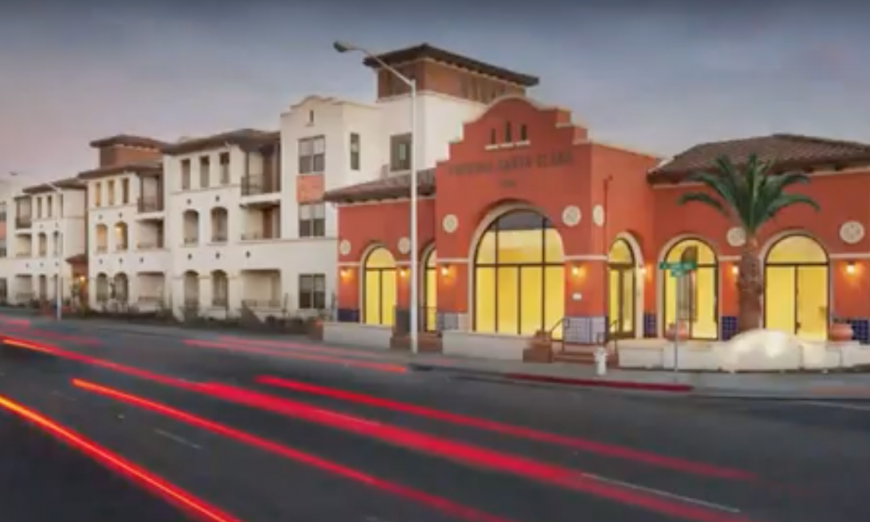The Planning Commission’s most recent meeting on June 12 was dominated by a study session on the El Camino Real Specific Plan. A presentation on the market feasibility of potential new development was given by consultant Christine Firstenberg with the Retail Real Estate Resource Group. The study session was aimed at discovering how the specific plan can contribute to the commercial and residential development along Santa Clara’s El Camino Real. The presentation by Firstenberg cost the City $5,000 and was lauded by commissioners who welcomed the expert knowledge to help guide development that may amount to billions of dollars.
The take-away message was that instead of a “retail apocalypse” underway, instead there’s a “retail revolution” taking place and cities need to update practices in order to prepare for the future.
“Retail square footage is shrinking, costs are going up so you’re not going to have retail for miles and miles on every single space,” said Fristenberg in response to a question about whether El Camino Real will become a long walkable stretch of shopping attractions. “If you plan for that you’ll have vacant spaces, so what you need to do is really intensify and focus on the areas where you want retail to go in and design those spaces.”
Firstenberg spoke about trends that have influenced the new retail reality. Demand for residential development is soaring and office space comes in second, leaving other commercial types in more turbulent waters. However, even with a hot residential market, tight profit margins for developers are expected to constrain new construction in the near future.
Seeking profitability, developers are incentivized by building residential and office rather than retail, and the high cost of land and rents have driven some types of retail out of business. The rise of e-commerce, especially Amazon, has veered many customers away from brick-and-mortar stores and into virtual shopping carts.
“We got over-retailed,” Firstenberg commented. “We have more retail per capita than any other country in the world.”
Compounding the issues faced by planners within a changing marketplace, looming technologies such as autonomous vehicles have created uncertainty about the amount of parking needed for the future as well as streetscape design. This is especially crucial for retail, as Firstenberg explained that thriving retail depends on being located at major intersections with steady traffic and ample parking, which includes parking lots, as street parking alone doesn’t suffice. In contrast to what some believe, Commissioner Lance Saleme pointed to research suggesting that demand for parking will not be reduced by autonomous vehicles.
“It’s a challenge,” responded Firstenberg. “You have to look out 20 years or more for your city.”
Despite the loss of many major retail brands nationwide as well as the scaling back of stores, Firstenberg asserted that though changes are happening, brick-and-mortar is not going away, especially businesses such as food, fitness, fashion, furniture and entertainment. Healthcare businesses such as urgent care are also increasingly occupying retail footprints. Two features of the “retail revolution” is a reduction in square footage for retail stores and the emergence of retail that creates an experience for consumers that can’t be duplicated online.
At the meeting Commission Chair Suds Jain proposed differentiating between “goods retail” and “service retail” as retail where services provided usually can’t be provided online.
Although retail stores have been struggling around the country, such establishments have always struggled to a certain degree in the Bay Area due to geographic constraints, which have in turn constrained the real estate market. Also, the high cost of living doesn’t bode well for the often lower wage retail jobs.
Commissioners Anthony Becker and Yuki Ikezi both expressed concern about the future of grocery stores in Santa Clara. Firstenberg echoed that concern saying that the increased density of development is creating grocery deserts in San Francisco and other urban parts of the region. She described grocery as not a dense use since dedicated parking is needed.
“If we lose grocery stores in 20 years, we’re going to regret it,” she said.
In terms of development guidelines within the El Camino Real Specific Plan, Firstenberg recommended that planners don’t require retail to be built if a project isn’t at the intersection of two major roads and with adequate, accessible parking. The size of retail spaces should be between 55 and 60 feet deep and 16 feet wide, and with supportive beams at least 20 feet apart. To help support restaurants that often go out of business because they’re burdened by costs of modifying spaces, Firstenberg advised that developers include the necessary ventilation and grease traps — features that can cost upwards of $100,000.
Some members of the public expressed the view that the development on El Camino Real should focus on entertainment and recreation rather than retail. Others suggested that some of the retail on the thoroughfare could be relocated to downtown. Another idea was that flexible building design could initially allow for residential and then potentially be converted to retail if market conditions shift.
The City is currently working on a draft of the design guidelines for the El Camino Real Specific Plan. The next Community Advisory Committee meeting for the plan has not yet been scheduled.






